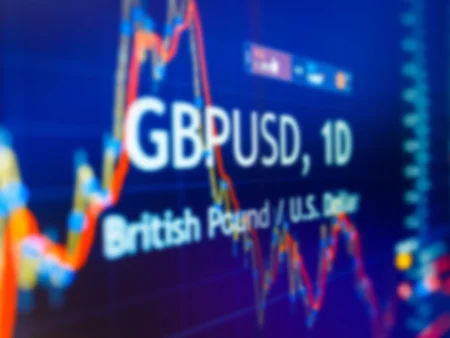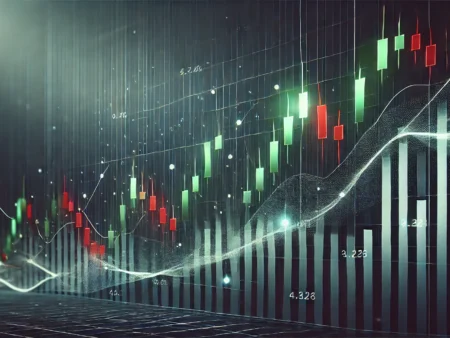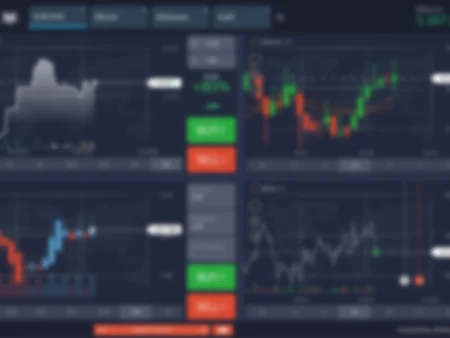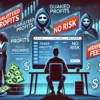What is the Forex Market and How Do You Trade It?
The Forex market, or foreign exchange market, is the largest and most liquid financial market in the world. It’s where currencies are traded against each other in pairs, and its daily trading volume exceeds $6 trillion. This global marketplace operates 24 hours a day, five days a week, providing opportunities for traders to speculate on currency movements around the clock.
1. What is the Forex Market?
The Forex market is a decentralized global market where all of the world’s currencies are traded. Whether you’re exchanging dollars for euros on vacation or an international business hedging its currency risk, all currency exchanges take place in the Forex market. Unlike other markets, such as stocks or commodities, Forex trading occurs over-the-counter (OTC) through a network of banks, brokers, and financial institutions rather than on a centralized exchange.
The Forex market is known for its high liquidity, meaning that transactions can happen quickly and easily with minimal price fluctuations. It operates across multiple time zones, beginning with the Sydney session, followed by Tokyo, London, and New York sessions, ensuring that currency trading is ongoing throughout the day and night.
2. How Does Forex Trading Work?
Forex trading involves buying one currency and selling another simultaneously. These transactions take place in pairs, such as EUR/USD (Euro vs. U.S. dollar) or GBP/JPY (British pound vs. Japanese yen). Each currency pair represents the value of one currency against another.
For example, if you are trading the EUR/USD pair:
- If you buy EUR/USD, you are betting that the Euro will strengthen against the U.S. dollar.
- If you sell EUR/USD, you are speculating that the Euro will weaken compared to the U.S. dollar.
Key Terminologies:
- Base Currency: The first currency in a pair (e.g., EUR in EUR/USD).
- Quote Currency: The second currency in a pair (e.g., USD in EUR/USD).
- Bid and Ask Prices: The bid is the price at which a trader can sell, and the ask is the price at which a trader can buy. The difference between these two prices is called the spread.
3. How to Trade in the Forex Market
Here’s a step-by-step guide to get started with Forex trading:
a) Choose a Forex Broker
To access the Forex market, you’ll need to open an account with a Forex broker. Brokers provide you with the trading platform and tools necessary to execute trades and manage your portfolio. When selecting a broker, consider:
- Leverage: The ability to trade larger positions with a smaller amount of capital.
- Spreads and Fees: Brokers earn money from the difference between the bid and ask prices (spread). Some may charge commissions as well.
- Regulation: Ensure that your broker is regulated by a financial authority to protect your funds (e.g., FCA, CySEC).
b) Open a Demo Account
Before risking real money, it’s advisable to start with a demo account. Most brokers offer these, allowing you to practice trading with virtual funds. This helps you get accustomed to the trading platform, understand how Forex trades work, and develop strategies without the risk of losing capital.
c) Choose a Currency Pair
Forex trading is centered around currency pairs. Some of the most commonly traded pairs include:
- Major pairs: EUR/USD, GBP/USD, USD/JPY, USD/CHF.
- Cross pairs: These exclude the U.S. dollar (e.g., EUR/GBP, EUR/JPY).
- Exotic pairs: A major currency paired with an emerging or less common currency (e.g., USD/TRY).
d) Analyze the Market
Forex trading relies heavily on analysis to predict price movements. There are two main methods of analysis:
- Fundamental Analysis: Evaluates economic indicators, such as interest rates, GDP, inflation, and political events, to predict currency value changes.
- Technical Analysis: Uses historical price charts, patterns, and indicators (like moving averages, RSI, MACD) to identify trends and forecast future price movements.
e) Decide to Buy or Sell
After analyzing the market, you’ll decide whether to buy or sell a currency pair based on your forecast. If you believe the base currency will rise in value relative to the quote currency, you will buy. If you think it will fall, you will sell.
f) Set a Stop-Loss and Take-Profit
To manage risk, it’s crucial to use a stop-loss order, which automatically closes a trade if the price moves against you by a certain amount. Similarly, a take-profit order locks in gains when the price reaches a target level. This helps protect against significant losses and secure profits.
g) Monitor and Close Your Trade
Once a trade is open, monitor its performance, and consider market changes. You can manually close the trade when it reaches a desirable level of profit or loss, or your stop-loss and take-profit orders will close it automatically.
4. Benefits of Forex Trading
- High Liquidity: The Forex market’s vast size ensures high liquidity, meaning trades can be executed quickly without significant price changes.
- 24-Hour Market: Forex trading is available 24 hours a day during the workweek, providing flexibility for traders in different time zones.
- Leverage: Forex brokers often offer leverage, allowing traders to control larger positions with a smaller amount of capital. However, leverage also increases the potential risk of losses.
- Diverse Trading Options: Traders can speculate on a wide range of currency pairs, including major, minor, and exotic currencies.
5. Risks of Forex Trading
- Leverage Risk: While leverage can amplify profits, it can also magnify losses, and traders can lose more than their initial investment.
- Volatility: Currency prices can be volatile, especially during economic or political events. Sudden price swings can lead to unexpected losses.
- Counterparty Risk: Forex trading takes place over-the-counter (OTC), so there is a risk that the broker may not fulfill its obligations if they become insolvent.
6. Real-World Example of a Forex Trade
Let’s say you decide to trade the EUR/USD currency pair, which is currently priced at 1.1800. You believe the Euro will strengthen against the U.S. dollar, so you decide to buy 1,000 units of EUR/USD.
- Investment Without Leverage: If the price rises to 1.1900, the value of your 1,000 units has increased. The difference of 0.0100 (1.1900 – 1.1800) yields a profit of $10 (1,000 x 0.0100).
- Investment With Leverage (10:1): If you traded with 10:1 leverage, you only need $118 to control the 1,000 units. Your $10 profit would represent an 8.47% return on your leveraged investment, but the risk of losses would also be magnified.
7. Conclusion
The Forex market offers unique opportunities for traders due to its size, liquidity, and the ability to trade 24 hours a day. However, it also carries significant risks, especially when using leverage. Successful Forex trading requires a solid understanding of market analysis, sound risk management strategies, and continuous learning to stay ahead of market movements. Whether you are new to trading or an experienced investor, it is crucial to approach the Forex market with caution and discipline.
If you’re considering entering the Forex market, take the time to practice with a demo account, develop a trading plan, and stay informed about global economic events that may affect currency prices.













